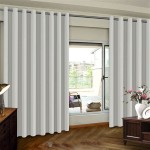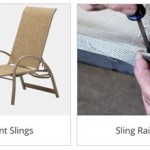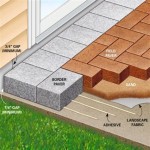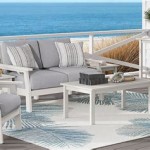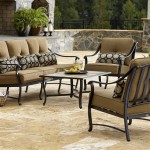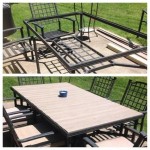Does Patio Furniture Need To Be Covered?
The question of whether patio furniture needs to be covered is a frequent consideration for homeowners and businesses alike. The answer is not a simple yes or no, as it depends on a variety of factors that include the type of material the furniture is made from, the climate in which it is located, the frequency of use, and the level of maintenance the owner is willing to undertake. Leaving patio furniture unprotected exposes it to the elements which can lead to premature wear and tear, fading, and even structural damage. However, covering furniture also requires effort and storage space, making it crucial to weigh the pros and cons to determine the most suitable course of action.
Understanding the potential risks posed by environmental factors is essential for making informed decisions about patio furniture protection. Sunlight, rain, snow, wind, and extreme temperature fluctuations can significantly impact the longevity and appearance of outdoor furnishings. UV radiation, for example, can cause colors to fade and plastics to become brittle. Moisture can lead to rust in metal furniture, mold and mildew growth on cushions and fabrics, and wood rot. Wind can blow furniture around, causing scratches and dents, while ice and snow can exert excessive weight, potentially leading to structural damage. Evaluating these risks in relation to the specific patio furniture in question is the first step in deciding whether covering is necessary.
The type of patio furniture material plays a significant role in determining its vulnerability to the elements. Different materials offer varying degrees of resistance to weather-related damage. For instance, aluminum is generally rust-resistant but can still be susceptible to dents and scratches. Wicker, whether natural or synthetic, can deteriorate over time with prolonged exposure to moisture and sunlight. Teak wood is naturally durable and weather-resistant but can still benefit from protection to maintain its color and prevent cracking. Cushions and fabrics are particularly vulnerable to fading, staining, and mold growth, necessitating careful consideration of their protection needs.
Material-Specific Considerations for Patio Furniture Protection
Different patio furniture materials require different levels of protection and care. Understanding the specific vulnerabilities of each material will help determine the necessity of covering the furniture.
Wood: Wood furniture, while often aesthetically pleasing and durable, is susceptible to moisture damage, especially if it is not properly sealed or treated. Rain and snow can seep into the wood, causing it to swell, warp, and eventually rot. Sunlight can also cause the wood to fade and crack. Covering wooden furniture, especially during periods of inclement weather or when it is not in use, can significantly extend its lifespan and maintain its appearance. Regularly applying sealant or varnish is another essential part of wood furniture maintenance. Teak is a naturally weather-resistant wood but covering it can still help preserve its rich color and prevent the development of a grey patina, which some people find undesirable.
Metal: Metal patio furniture, such as aluminum, steel, and wrought iron, is generally more durable than wood, but it is not immune to the elements. Steel and wrought iron are prone to rusting if their protective coating is damaged or scratched. Aluminum, while rust-resistant, can oxidize, leading to a dull, chalky appearance. Covering metal furniture can help prevent rust and oxidation, as well as protect it from scratches and dents caused by windblown debris. It is important to ensure that any covers used are breathable to prevent moisture from becoming trapped underneath, which can accelerate the corrosion process. Regularly cleaning metal furniture and applying a protective coating can also help prolong its lifespan.
Resin Wicker: Resin wicker, also known as all-weather wicker, is a synthetic material designed to withstand the elements. It is resistant to moisture, fading, and cracking, making it a popular choice for outdoor furniture. However, even resin wicker can benefit from being covered, especially during periods of prolonged inactivity or extreme weather. Covering it can help prevent dirt and debris from accumulating in the weave, making it easier to clean. It can also protect the furniture from UV radiation, which can eventually cause the resin to become brittle and crack. While resin wicker is relatively low-maintenance, covering it can help extend its lifespan and maintain its appearance.
Fabric and Cushions: Patio furniture cushions and fabrics are particularly vulnerable to the elements. Sunlight can cause colors to fade, while rain and snow can lead to staining and mold growth. Even fabrics that are treated to be water-resistant can eventually become saturated and degrade over time. Covering cushions and fabrics when they are not in use is highly recommended to protect them from the elements and prolong their lifespan. Alternatively, storing cushions indoors when they are not being used is an effective way to protect them. Using covers made from breathable, water-resistant materials is ideal, as they will allow moisture to escape while still providing protection from the elements. Regularly cleaning cushions and fabrics and treating them with a fabric protectant can also help prevent staining and fading.
Climate and Environmental Factors Impacting Patio Furniture
The climate in which patio furniture is located plays a crucial role in determining whether it needs to be covered. Different climates present different challenges for outdoor furnishings. Areas with high humidity, for example, are more prone to mold and mildew growth, while areas with intense sunlight can cause fading and cracking. Locations with frequent rain or snow can lead to water damage and rust. In coastal areas, the salt air can accelerate corrosion. Carefully considering the specific climate and environmental factors in a particular area is essential for making informed decisions about patio furniture protection.
In regions with harsh winters, covering patio furniture is particularly important. Snow and ice can accumulate on furniture, putting stress on its structure and potentially causing it to crack or break. Freezing and thawing cycles can also exacerbate water damage, causing wood to warp and metal to rust. Covering furniture during the winter months can help protect it from these damaging effects and extend its lifespan. It is also important to consider storing cushions and fabrics indoors during the winter, as they are especially vulnerable to moisture damage and freezing temperatures.
In areas with hot, sunny summers, UV radiation is a major concern for patio furniture. Prolonged exposure to sunlight can cause colors to fade, plastics to become brittle, and wood to crack. Covering furniture during the hottest part of the day or when it is not in use can help protect it from UV damage. Using covers made from UV-resistant materials is also recommended. Additionally, regularly applying a sealant or protectant to wood and other vulnerable materials can help prevent sun damage.
In regions with frequent rain or high humidity, moisture damage is a primary concern for patio furniture. Rain and humidity can lead to mold and mildew growth, rust, and wood rot. Covering furniture can help protect it from moisture damage, but it is important to use covers made from breathable materials to prevent moisture from becoming trapped underneath. Regularly cleaning furniture and allowing it to dry thoroughly can also help prevent mold and mildew growth. In areas with particularly high humidity, using a dehumidifier in the storage area can help keep furniture dry.
Assessing the Level of Maintenance Required
The level of maintenance a homeowner is willing to undertake also factors into the decision of whether to cover patio furniture. Covering furniture requires an initial investment in covers, as well as the effort of putting them on and taking them off as needed. It also requires storage space for the covers when they are not in use. Some homeowners may prefer to avoid these tasks and instead opt for more frequent cleaning or repairs. Others may find that the effort of covering furniture is worthwhile to protect their investment and reduce the need for more intensive maintenance. Balancing the time and resources available for patio furniture maintenance with the desire to protect the furniture is a key consideration.
For individuals seeking a low-maintenance approach, choosing furniture made from durable, weather-resistant materials is essential. Aluminum, resin wicker, and teak wood are all good options for furniture that can withstand the elements without requiring extensive care. Using cushions and fabrics made from water-resistant and fade-resistant materials can also help minimize the need for maintenance. While covering furniture may still be beneficial in certain situations, selecting durable materials can significantly reduce the overall effort required to keep patio furniture in good condition.
Alternatively, for individuals who are willing to invest more time and effort in maintenance, covering furniture can be an effective way to prolong its lifespan and maintain its appearance. Regularly cleaning furniture, applying protective coatings, and storing cushions indoors are all effective strategies for keeping patio furniture in good condition. In this case, covering furniture can be seen as an additional layer of protection that reduces the need for more intensive maintenance tasks.
Ultimately, the decision of whether to cover patio furniture is a personal one that depends on a variety of factors. By carefully considering the type of furniture, the climate, and the level of maintenance desired, individuals can make informed decisions that will help them protect their investment and enjoy their outdoor spaces for years to come. Whether one chooses to cover their patio furniture or not, regular cleaning and maintenance are essential for prolonging its lifespan and maintaining its appearance. Properly caring for outdoor furniture ensures it remains a comfortable and inviting space for relaxation and entertainment.

4 Reasons Why You Should Cover Your Patio Furniture Sunnydaze Decor

Winterproofing Your Outdoor Furniture Easy Tips

How To Protect Your Outdoor Furniture During All Seasons

Patio Furniture Covers To Protect Your Outdoor From Rain

How To Choose Outdoor Patio Furniture Covers

Tips For Using Your Outdoor Furniture Cover The Blog Coverstore

Does Patio Furniture Need To Be Covered In Summer Castlery Us

Is It Worth Covering Outdoor Furniture

How To Protect Your Outdoor Furniture From Florida S Humidity And Rain

How To Keep Water From Pooling On Patio Furniture Cover

